Using Windows 7—The User Experience
Windows 7 has a familiar yet different user interface. Most of the visual aspects of the desktop environment have been updated, but you'll find most of the tools and applications you remember from Windows XP and Windows Vista right where you expect. As with Windows Vista, the user interface in Windows 7 is Aero. While substantially the same as Windows Vista, there have been a number of tweaks and improvements to the Aero UI, which make the Windows 7 experience subtly different from the Windows Vista experience. A few new features in the UI are so attractive that they will be very gratifying if you have just switched from Vista to Windows 7. If you want the older stylings of previous Windows versions (mainly Windows 2000–era visual stylings), revert to the "Classic" style. However, we highly recommend giving the new look and feel a try for a week or so before ditching it.
Microsoft's visual palette now has three different user styles to choose from:
- Windows Classic—Contains the same user interface as Windows 2000 and earlier versions, if you still prefer that interface. It is important to note, however, that even though the visual theme might be set to Windows Classic, you will still have the Windows 7 Start menu, with no easy way to revert to the "old school" Start menu.
- Windows 7 Basic—Gives you the Aero look and feel, but without all the semitransparent glass effects that can cause old graphics hardware to become a bit overwhelmed.
- Aero—Provides a semitransparent "glass" look for the taskbars, menu bars, and window frames, as well as advanced features. Those features include Flip, which shows thumbnails of open programs when you move the mouse pointer over an application button in the button bar, Aero Peek, which allows you to see the contents of windows before selecting them, animated windows when opening and closing windows, and Flip 3D for "flipping" between 3D representations of your windows. Aero is processor intensive and, therefore, needs a high-grade video graphics card installed on your computer to work.
But even with all the enhancements, everything still seems to have a similar function or placement to that of Windows 2000, XP, and Vista, and it's not too different from Windows 9x or Me. Thus, you'll easily leverage your existing experience and expertise in navigating and operating Windows 7. After a few days, you'll soon forget how you got by without all these useful improvements.
However, Windows is more than just an OS and GUI. Like other versions of Windows, Windows 7 includes a broad collection of useful programs, from a simple arithmetic calculator to a fancy system and network-management tools. This list also includes a word processing program called WordPad, a drawing program called Paint, Internet Explorer for cruising the Web, CD-burning software that lets you create your own CDs, DVD-burning and playback tools, utilities for keeping your hard disk in good working order, and a data-backup program—just to name a few. See Chapter 7, "Gadgets and Other Supplied Accessories," to learn more about some of the accessories included with Windows 7.
Parts of the Windows 7 Screen
At this point, you should be booted up and signed in. After you've logged in, Windows 7 deposits you in its basic environment (called the desktop). You'll probably notice two things almost immediately: first, the taskbar at the bottom of the screen, and second, an empty (or nearly so) desktop (see Figure 4.1). The taskbar is the central control mechanism for the Windows 7 user experience. It hosts the Start menu, the taskband area, active program buttons, the notification area (sometimes called the system tray by users that have been using Windows for a while), and the clock. The only item that is present on your desktop is the Recycle Bin, although if you purchased a computer system with Windows 7 preinstalled, you might see other icons as well. Unlike previous versions of Windows, with a default installation of Windows 7, the Recycle Bin is located in the top-left corner of the desktop and not in the lower right, as with Windows XP and Vista. The location of the Recycle Bin might change, however, depending on how you sort icons on the Desktop.
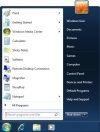
Figure 4.1 The default desktop with the Start menu open.
All you really must know to use Windows 7's interface are these essential building blocks and how to manipulate a window and its commands. If you've been using any recent version of Windows, you already know the latter. You just need to be brought up to speed on the advanced Windows 7 interface specifics.
The Desktop
The desktop is your home base while doing your work in Windows. It is always on the screen as the backdrop (whether you see it or not) and you can deposit files and folders right on it for storage. It's analogous to a real desktop in this way. It also serves as a handy temporary holding area for files you might be copying from, say, a floppy disk to a hard disk folder. The Recycle Bin holds deleted work objects, such as files and folders, until you empty it (with caveats). Just as in previous versions of Windows (or the Mac, for that matter, if you're coming from that background), you'll do all your work in Windows 7 using graphical representations of your files and applications, called icons.
All the desktop icons you are familiar with from Windows XP and 2000 have been moved to the Start menu. (And if you upgraded from Windows XP or Vista, the Windows 7 Start menu will look very familiar.) You can gain access to Computer, Documents, and Network with a simple click on the Start button. You can easily control which items appear on the taskbar, or on the desktop (see Chapter 23).
The Recycle Bin
The Recycle Bin acts a bit like the waste paper basket at the side of your desk. After you throw something into it, it's basically trash to be thrown out; however, you can still retrieve items from it if you get there before the cleaning staff takes it and throws it away for good. Within Windows 7, the Recycle Bin holds those files you've deleted using Windows Explorer or Computer. It does not capture files deleted by third-party tools, files deleted from floppy disks or network drives, files removed with an uninstall program or from DOS boxes, or DOS files running in a DOS box.
The Recycle Bin has limited storage capacity. However, Windows 7 provides each user with a default amount of Recycle Bin space, specified in megabytes. When the maximum size of the Recycle Bin is reached, the oldest files are permanently removed from the hard drive to make room for newly deleted files. The size of the Recycle Bin can be customized as a percentage across all drives or as a unique size on each individual volume. The Recycle Bin is customized through its Properties dialog box (see Figure 4.2). The configuration options are discussed in Chapter 23, but if you want to get to them now, right-click the Recycle Bin icon and select Properties from the pop-up menu.

Figure 4.2 The Recycle Bin Properties dialog box.
After a file is removed from the Recycle Bin, it cannot be recovered using native tools. You must restore the files from a backup, use a third-party recovery tool (which often needs to be in place before the file is deleted), or live without the lost files. If you don't want your excess trash sitting around, you can also configure the system to bypass the Recycle Bin entirely so that it permanently deletes files immediately instead of granting you a recovery period.
To restore a file still retained in the Recycle Bin, double-click the desktop icon to open the Recycle Bin, locate and select the file to restore, and then click the Restore This Item button in the toolbar (see Figure 4.3). The file/folder(s) then are returned to the original location.

Figure 4.3 Restoring a file from the Recycle Bin.
You can also manually empty the Recycle Bin. This is often a useful activity before defragmenting your hard drive or if you just want to permanently delete files and folders. The Empty Recycle Bin command, found in the right-click pop-up menu for the Recycle Bin icon, the File menu if the menu bars are enabled (be sure no items are selected—otherwise, the File menu's context changes to file/folder restore operations), and the Recycle Bin Tasks list of the Recycle Bin interface, is used to clear out all files that are being retained.
Icons
As you know, the small graphical representations of your programs and files are called icons. Windows 7 uses icons to represent folders, documents, programs, and groups of settings (such as dial-up connections).
Icons are either objects themselves or shortcuts. A shortcut is a means to gain access to an object from multiple locations throughout the environment. Shortcuts are the preferred way to access the same object from multiple locations, to avoid having to make duplicate copies of the original object or application. Duplicating the object often causes version problems, such as never knowing which one has your most recent changes, and difficulties in upgrading or replacing applications. Shortcuts eliminate these issues and take up less space. You could have thousands of shortcuts pointing to the same application or document and still save drive space.
Additionally, a shortcut can define alternative launching parameters, such as default directories, command-line parameters, compatibility mode, and so on. To alter the settings of a shortcut, right-click it and select Properties from the pop-up menu.
Dialog Boxes
The Open and Save dialog boxes (also known as file or browse dialog boxes) for most applications still offer the same shortcuts and controls as those of previous versions of Windows. This typically includes a shortcut menu to Recent Places (the new name for Internet Explorer history), Desktop, Documents, Computer, and Network. Not all applications that function on Windows 7 offer a fully enhanced file dialog box.
Many dialog boxes have tabs. These often appear at the top of a dialog box, as the tabs for General and Security do (see Figure 4.4). Tabs are used to offer multiple pages or displays of controls within a single smaller window. Many of the configuration settings dialog boxes have tabs, so watch for them. To select another tab, just click on it. In some cases, tabs are easy to miss; the new color scheme and display enhancements don't always direct your eyes to tabs.
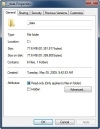
Figure 4.4 A Properties dialog box containing tabs that you can click to see additional settings.
Putting Items on the Desktop
The desktop is a convenient location for either permanent or temporary storage of items. Many folks use the desktop as a home for often-used documents and program shortcuts. I'm quite fond of using the desktop as an intermediary holding tank when moving items between drives or computers, or to and from removable media. It's particularly good for pulling found items out of a search window or other folder while awaiting final relocation elsewhere.
Here are some quick helpful notes about using the desktop:
- You can send a shortcut of an object to the desktop very easily by right-clicking it and choosing Send To, Desktop (thus creating the shortcut).
- The desktop is nothing magical. Actually, it's just another folder with a few additional properties. Prime among them is the option to have live, active, Internet-based information on the desktop using Windows gadgets, such as stock tickers, weather reports, and the like.
- Each user on the machine can have his or her own desktop setup, with icons, background colors, screen saver, and such.
- Whatever you put on the desktop is always available by minimizing or closing open windows, or more easily by clicking the Show Desktop button on the far right of the taskbar. It is for just this reason that almost every application enables you to save files directly to the desktop, and many programs default to saving files on the desktop. Keep in mind that some items cannot be moved onto the desktop—only their shortcuts can. (For example, if you try to drag a Control Panel applet to the desktop, you'll see a message stating that you cannot copy or move the item to this location.)
If you want to be able to access a Control Panel applet from the desktop, you have only one choice: create a shortcut to the applet and place it on the desktop. However, in other cases, when you're copying and moving items, particularly when using the right-click method, you'll be presented with the options of copying, moving, or creating a shortcut to the item. What's the best choice?
Here are a few reminders about shortcuts:
- They work just as well as the objects they point to (for example, the program or document file), yet they take up much less space on the hard disk. For this reason, they're generally a good idea.
- You can have as many shortcuts scattered about for a given object as you want. Therefore, for a program or folder you use a lot, put its shortcuts wherever you need them—put one on the desktop, one on the Taskband, one on the Start menu, and another in a folder of your favorite programs on the desktop.
- Make up shortcuts for other objects you use a lot, such as folders, disk drives, network drives and printers, and web links. From Internet Explorer, for example, drag the little blue E icon that precedes a URL in the Address bar to the desktop, to save it as a shortcut. Clicking it brings up the web page.
- The link between shortcuts and the objects they point to can be broken. This happens typically when the true object is erased or moved. Clicking the shortcut can result in an error message. In Windows 7, this problem is addressed in an ingenious way. Shortcuts automatically adjust when linked objects are moved. The OS keeps track of all shortcuts and attempts to prevent breakage. Shortcut"healing" is built into Windows 7 for situations in which the automated recovery mechanism fails.
- If you're not sure about the nature of a given shortcut, try looking at its properties. Right-click the shortcut and choose Properties. Clicking Find Target locates the object that the shortcut links to and displays it in a folder window.
Properties and the Right-Click
Ever since Windows 95, a common theme that unites items within Windows is the aspect called properties. Properties are pervasive throughout Windows 9x, NT 4, 2000, XP, Vista, and now Windows 7. The Properties dialog boxes provide a means of making changes to the behavior, appearance, security level, ownership, and other aspects of objects throughout the OS. Object properties apply to everything from individual files to folders, printers, peripherals, screen appearance, the computer itself, or a network or workgroup. All these items have a Properties dialog box that enables you to easily change various settings. For example, you might want to alter whether a printer is the default printer or whether a folder on your hard disk is shared for use by co-workers on the LAN.
A typical set of properties is shown in Figure 4.5, which displays the Properties dialog box for the D: drive (hard disk) on a computer. Notice that there are several tab pages in this dialog box. Some Properties dialog boxes have only a single page, whereas others have many.
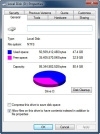
Figure 4.5 A typical Properties dialog box for a hard disk.
Properties dialog boxes are very useful and often serve as shortcuts for modifying settings that otherwise would take you into the Control Panel or through some other circuitous route. With some document files (for example, Word files), you can examine many settings that apply to the file, such as the creation date, author, editing history, and so forth.
Here are some typical uses of right-click context menus:
- Sharing a folder on the network
- Changing the name of your hard disk and checking its free space
- Changing a program's icon
- Creating a new folder
- Setting the desktop's colors, background, screen saver, and so on
- Adjusting the date and time of the clock quickly
- Closing an application
- Displaying a font's technical details
- Renaming an object
As an example of the right-click, simply get to an empty place on the desktop and right-click on it. Right by the cursor, you'll see a menu that looks like the one shown in Figure 4.6. Notice that you can slide your cursor up and down the menu to make choices. Choose Personalize down at the bottom of the list. You'll see the Personalization settings for your desktop (as well as general video display, screen saver, and other related items). By the way, many menus (Start, menu bar, pop-up, and so on) have commands with a small arrow to one side. If you highlight one of these commands, a submenu flies out—hence, the term flyout menu.
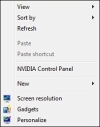
Figure 4.6 An example of a right-click menu, this one from an empty location on the desktop. Notice that it contains flyout menus.
If you want to use Windows most efficiently, make a habit of right-clicking on objects to see what pops up. You might be surprised to see how much time you save with the resulting shortcuts.
Using Windows Explorer
For a bird's-eye view of your computer, many users prefer Folder view over the usual folder system, which can clutter your screen with numerous overlapping windows when you have lots of them open. Using the folders in the left pane makes copying, moving, and examining all the contents of your computer easier. If you're doing housekeeping, copying and moving items from one folder to another or across the network, or hopping back and forth between viewing web pages and your local hard disk, mastering this view will serve you well.
You probably remember that Folder view was introduced with Windows 95 in the form of Windows Explorer, and although it's still in Windows 7 under that name, it's not featured as much as it used to be. This is because the functionality of Windows Explorer can be added to all folder windows (such as Computer) simply by enabling the Show All Folders option (and optionally choosing Automatically Expand to Current Folder) in the Folder Options dialog box under Appearance and Personalization in the Control Panel (see Figure 4.7).
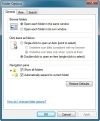
Figure 4.7 The Folder Options dialog box, where you can choose to see more folder information in the navigation pane.
The Folder paradigm affords significant power and flexibility in file and folder control; Microsoft and other software makers have adopted it for other classes of programs. For example, right-click on Computer and choose Manage. The resulting application (Computer Management) uses the same approach, as do many web pages.
The Folder view (call it Windows Explorer, if you want) lets you examine the Control Panel, the LAN, the Internet, your hard disk, or the Recycle Bin—all with a minimum of effort.
To recap, you can get to Windows Explorer by clicking Start, All Programs, Accessories, Windows Explorer.
Figure 4.8 shows the folders that appear on my own computer in Folder view.

Figure 4.8 The basic Windows Explorer screen, showing the computer's major components on the left and the contents on the right.
Displaying the Contents of Your Computer
When you use Windows Explorer, all the objects constituting your computer appear in the list on the left. Some of those objects have a triangle pointing right to the left of them, which means the object is collapsed; it contains subitems that aren't currently showing. These triangles are visible only if the mouse cursor is in the left Navigation pane; once you move out of the Navigation pane, the triangles fade and are no longer visible.
Click an item in the left pane to see its contents in the right pane. If the item has a white triangle pointing to the right, click it to open the sublevels in the left pane, showing you the relationship of the folders and other items in a tree arrangement. In the figure, you can see that the Documents Library has been opened in this way. Notice that the triangle is no longer white and pointing to the right, but is now black and pointing downward, indicating that the object's display has been expanded. Clicking the black triangle causes that branch to collapse.
If you open a local disk drive or disk across the network, you can quickly get a graphical representation of the disk's folder layout. Then click a folder to see its contents. By right-clicking on disks, folders, or files, you can examine and set properties for them. The straight lines connecting folders indicate how they're related. If you have more folders than can be seen at one time, the window has a scrollbar that you can use to scroll the tree up and down.
Notice that there are two scrollbars—one for the left pane and one for the right. These scroll independently of one another, which can be very useful when you're copying items from one folder or drive to another.
Working with Objects in Folder View
Working with folders and files in this view is simple. As explained previously, you just click an item in the left pane, and its contents appear in the right pane. Choose the view (Large Icons, Small Icons, and so on) for the right pane using the toolbar's More options button, near the top-right corner. In Details view, you can sort the items by clicking the column headings.
When they're displayed, you can drag items to other destinations, such as a local hard disk, a floppy drive, or a networked drive. You can drag and drop files, run programs, open documents that have a program association, and use right-click menu options for various objects. For example, you can right-click files or folders and choose Send To, DVD RW Drive to copy items to a DVD disc. I use the Send To, Mail Recipient option all the time, to send attachments to people via email.
With a typical hard disk containing many files, when its folders are all listed in the left pane, some will be offscreen. Because the two panes have independent scrollbars, dragging items between distant folders is not a problem. Here's the game plan:
- Be sure the source and destination folders are open and visible in the left pane, even if you have to scroll the pane up and down. For example, a network drive should be expanded, with its folders showing (using and mapping network drives is covered in Chapter 20, "Using a Windows Network").
- Click the source folder in the left pane. Now its contents appear to the right.
- Scroll the left pane up or down to expose the destination folder. (Click only the scrollbar, not a folder in the left pane; if you click a folder, it changes the displayed items on the right side.)
- In the right pane, locate and drag the items over to the left, landing on the destination folder. The folder must be highlighted; otherwise, you've aimed wrong.
This technique suffices most of the time. Sometimes, it's too much of a nuisance to align everything for dragging. In that case, use the cut/copy-and-paste technique discussed earlier in the chapter. Remember, you can copy and paste across your home LAN as well as between your local drives.
Here are a few tips when selecting folders:
- You can select only one folder at a time in the left pane. If you want to select multiple folders, click the parent folder (such as the drive icon) in the left pane and select the folders in the right pane. Use the same techniques described earlier for making multiple selections.
- When you select a folder in the left pane, its name becomes highlighted. This is a reminder of which folder's contents are showing in the right pane.
- You can jump quickly to a folder's name by typing its first letter on the keyboard. If there's more than one folder with the same first letter, each press of the key advances to the next choice.
- The fastest way to collapse all the branches of a given drive is to click that drive's black triangle sign.
- You can quickly rearrange a drive's folder structure in the left pane by dragging folders. You can't drag disk drives, but you can create shortcuts for them (for example, a network drive) by dragging them to, say, the desktop.
- If a folder has subfolders, those appear in the right pane as folder icons. Clicking one of those opens it as though you had clicked that subfolder in the left pane.
- When dragging items to collapsed folders (ones with a plus sign), hovering the pointer over the folder for a second opens it.
- You can use the right-click-drag technique when dragging items if you want the option of clearly choosing Copy, Move, or Create Shortcut when you drop the item on the target.
- To create a new folder, in the left pane, click the folder under which you want to create the new folder. Right-click in the right pane and choose New, Folder.
- Delete a folder by right-clicking it and choosing Delete. You're asked to confirm.
Windows Shortcut Keys
Longtime users of Windows have probably grown accustomed to navigating around the Windows user interface using the keyboard. This especially comes in handy when your mouse or trackball decides to suddenly quit working, and you need to save the document you're working on. On modern computer keyboards, you will see a Windows key that looks like the Microsoft Windows logo—pressing this Windows key once will bring up the Start menu. However, starting with Windows XP, you can use combinations of the Windows key and other keys to perform certain system tasks quickly. Although not an exhaustive list, Table 4.1 shows several Windows key shortcuts that are useful in Windows 7 that might help speed your way through the Windows UI.
Table 4.1. Windows Shortcut Keys
|
Windows Key Combination |
Description |
|
Windows+Shift+left, right arrow |
Moves the active window to the left or right monitor in multimonitor setups |
|
Windows+P |
Opens the Projector Settings application to select where the active display is presented (used mainly with laptop and multimonitor computers) |
|
Windows+spacebar |
Shows the desktop; all windows become transparent so you can see the desktop behind them |
|
Windows++/– (plus/minus keys) |
Zooms in/out |
|
Windows+E |
Opens Windows Explorer |
|
Windows+L |
Locks the computer |
|
Windows+D |
Minimizes all windows and show the desktop |
|
Windows+Tab |
Windows Aero task switcher—works like Alt+Tab but shows a preview of the window you are switching to |
|
Windows+F |
Opens a search window |
As you can see, there are a multitude of Windows key combinations that can make your day-to-day life easier as you're jetting around the Windows interface. A more comprehensive list of Windows shortcut keys can be found in the Windows 7 online help.